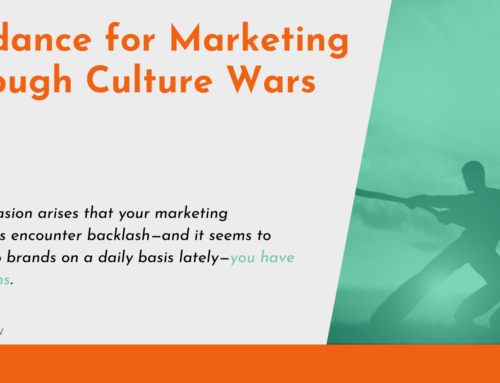One of the points that I can’t stress enough, as a branding and marketing professional, is to know your customer. Your buyer personas are a direct reflection of your brand, so you must know them inside and out before you begin crafting your message. When creating your buyer personas, you may find that many of your customers fit into particular archetypes.
What are the Archetypes?
We discuss these archetypes in my book, Your Marketing Road Map, as they apply to your customers. These are as follows:
- The Innocent
- The Orphan
- The Hero
- The Caregiver
- The Explorer
- The Rebel
- The Lover
- The Creator
- The Jester
- The Sage
- The Magician
- The Ruler
Of course, not everyone will fit neatly into one category. That’s the beauty of human nature, right? Still, if you do know your buyers’ archetypes, you can even better understand what drives them to make purchases. You’ll have one more tool that helps you reach them on a deep and personal level.
All the Characters in Play
If you’re only focusing on the archetype of your customers, then you’ve forgotten one major character in your story. Have you considered your brand’s role in everything?
Your brand could also identify with one or more of the archetypes. Knowing how you fit could help you discover more big connection opportunities with your buyers. Consider some of the biggest brands you know and which of the archetypes they embody.
First, there’s Apple, which is certainly in the Creator category, with a bit of the Rebel thrown in for good measure. They did recently eliminate the headphone jack from the iPhone 7, much to the dismay of the buying public. It’s not the first time they’ve gone against popular opinion in the name of creativity and advancement, either.
What about Johnson & Johnson, with their ads featuring adorable babies and kids, with parents that nurture through the use of their products? Of course this brand archetype would be a Caregiver, and also maybe the Innocent.
The Ruler archetype would embody some of the most luxurious and powerful brands, including such powerhouses as BMW and Rolex. The Jester is a brand that doesn’t take itself too seriously and delights in making its customers laugh, such as Taco Bell, The Onion, and the rebranded Old Spice. There’s also the Lover, a brand that indulges customers’ pleasures, such as Victoria’s Secret or Dove Chocolate.
Now that you understand how particular brands identify with one or more of Jung’s archetypes, it’s time to determine where your brand fits.
Identifying Your Brand Archetype
If you do decide to investigate your brand archetype, remember that no single buyer or brand will identify with only one. We are all multi-layered, with some of those layers standing out among the rest. If you don’t fit in one single category, that’s perfect. Just make sure you’re not trying to fit all of them.
To determine your primary archetype, turn first to your brand’s mission and vision. This should tell you everything you need to know. Do you strive to offer products and experiences that no one else has ever provided before? Then you’re probably a Creator. Do you want to assure buyers that buying from you makes them tough or brave? If so, you’re the Hero. Does your brand exude adventure and excitement? Then you’re most certainly the Explorer.
Once you’ve determined your primary brand archetype, you’ll probably have a secondary classification. This classification is often discovered in the voice or tone you use to present your message. Maybe you’re a Hero that goes against politically correct speech to make a point. Then you might also be a Rebel. If you’re a Lover that also focuses on purity, then you might also be an Innocent.
Remember, you may fit more than two or three categories, and that’s okay. Simply determine which of the archetypes most closely fit your brand. Then embrace them. Convey those characteristics through your marketing and advertising so that you can begin building relationships with buyers who are seeking a brand just like yours.
You’ll be able to share a fuller, richer brand story.
To learn more about archetypes and how they apply to your customers, be sure to check out my book, Your Marketing Road Map.






